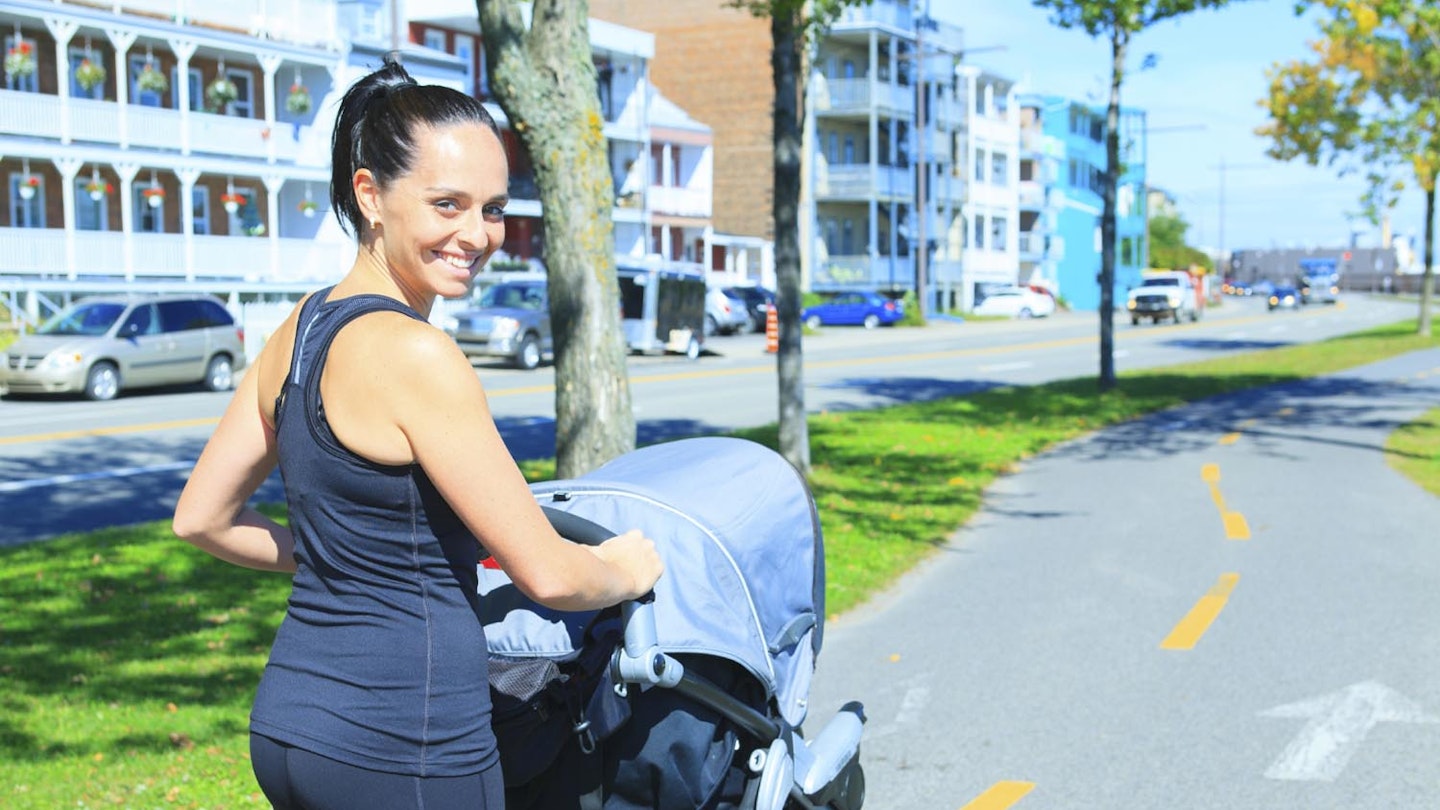Looking for a gym without Lycra and bare midriffs, but with opening hours to suit you and your baby? Welcome to the great outdoors!
It’s free and can help you lose baby weight. Brisk walking is an efficient way to get fit. And with your baby in a buggy, you won’t need to arrange childcare. For most people, there’s little difference in the calories burnt walking rather than running a mile. The more often you walk, the faster you’ll get, the further you’ll go and the more fat you’ll burn. And when you’re feeling tired, exercise can actually perk you up. Getting active raises your spirits and helps you regain your pre-pregnancy shape.
When can I start?
‘It’s safe to start as soon as you’ve had your postnatal six-week GP check,’ says Emma Redding, personal trainer, member of The Guild of Postnatal Exercise Teachers, and founder of buggyfit.co.uk, which runs outdoor exercise sessions around the country for pre- and postnatal mums.
A 10-minute walk is a reasonable start off, building to 30 minutes over a few weeks.
How far can I walk?
‘Giving birth is the equivalent to major surgery,’ says Emma. ‘You can’t expect to walk out of hospital and just continue as before. It’s normal to feel lethargic and heavy because of the daily demands on you as a new mum. Personally, I was fitter and more capable when I was 38 weeks pregnant with my first child than I was 10 weeks postnatal.’ A 10-minute walk is a reasonable start off, building to 30 minutes over a few weeks. Factor in a rest halfway, in case you feel more tired than expected.
If your pace does dip, try accelerating for 100 metres or so
How should I walk?
As with any exercise session, it’s wise to start each walk slowly and gradually increase your pace. Walk in a way that feels natural and allows you to keep a good speed. As you progress, it’ll help if you aim for your heel to hit the ground first, then roll onto your toe. ‘Maintain your posture to strengthen the muscles stretched and weakened during pregnancy,’ says Emma. If your pace does dip, try accelerating for 100 metres or so, perhaps using the benches in a park as markers. And take advantage of any hills to push your buggy – and pulse – skywards.
How fast should I go?
‘When walking for exercise, the key element is pace and not distance,’ advises Emma. Simply aim to walk as fast as you can. This is a more meaningful target than a specific time or speed target, because it’s personal to you, letting you progress at your natural rate. ‘The point is to raise your heart rate, so you should only just be able to hold a conversation,’ she adds.
The feel-good factor of exercise and fresh air starts a series of positive spin-offs
How will I benefit?
When you push a buggy at 3.5 miles per hour, you increase your calorie burn by 20%, compared to walking without a pushchair at the same speed. Build up to 30 minutes a day and you should soon start to see the benefits of a flatter stomach and more toned legs and bottom. The feel-good factor of exercise and fresh air starts a series of positive spin-offs. ‘If you’ve been out and worked hard, you are likely to make healthier, more sensible food choices afterwards,’ says Emma.
How to do it with a…
Pram
Adjust your buggy’s handlebars to waist height. Keep your shoulders back and down, chest out, spine long and bottom tucked under as you push. This posture is especially important if you’re breastfeeding, as you’ll be carrying more weight in your bust area. Avoid taking a child on a buggy board, as this makes you walk with your bottom sticking out.
Front carrier
Choose a front carrier that gives shoulder, back and lumbar support, especially if you’ve had a c-section. Adjust the carrier to transfer the weight to your hips, so all the weight isn’t on your shoulders. Plus, make sure all straps lie flat.
Back carrier
Adjust the straps and back length on the carrier so the belt sits neatly on your hipbones. The shoulder straps should be in contact with your torso from your shoulder blades to under your arms.
